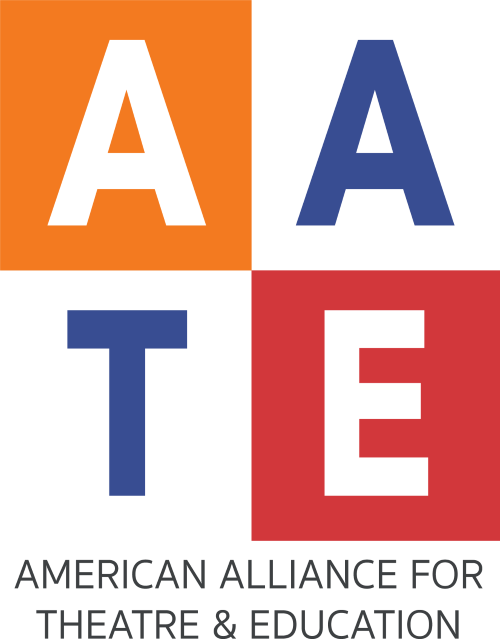AATE Strategic Plan: 2016-2020
Mission Statement
The American Alliance for Theatre & Education serves and inspires a growing collective of theatre artists, educators, and scholars committed to transforming young people and communities through the theatre arts.
Diversity Statement
AATE embraces diversity and encourages inclusion of all races, social classes, ages, genders, religions, sexual orientations, national origins, and abilities.
Vision
We envision a world where every child has access theatre; where every city has a theatre for young audiences; where every community has a youth theatre; where every school integrates theatre arts curriculum. We envision a time when the full spectrum of the theatre arts becomes a pervasive part of our landscape. We celebrate the courage and creativity of those artists and educators as we connect, inspire, and support them.
Core Values
AATE sparks dialogue and facilitates conversations across specializations which allows for the cross-fertilization of ideas, sharing of best practices, scholarship and networking. At the core of its membership of artists, educators and scholars are five shared values: Education, Scholarship, Advocacy, Diversity and Leadership.

Priority Issues for AATE
Fiscal Responsibility
Strategies:
● Enact and maintain an austerity budget that reflects AATE priorities and strategic goals
● Evaluate and plan for an Executive Director position in AATE by 2020
● Fundraise 5k each year to acquire 100k in the President’s Fund by 2020
● Secure 10k in Corporate Support for each National Conference
Provide Leadership
Strategies:
● Re-institute the AATE bi-annual Leadership Institute
● Increase awareness of the expressive value and economic benefit of theatre to society and young people through expanded Theatre In Our Schools (TIOS) events and National Conference
● Influence public policy and legislation affecting theatre and education by continuing AATE involvement in national and global initiatives
Collaborative Partners
Strategies:
● Review current organizational and advocacy partnerships for viability and growth
● Grow the AATE investment and role in the National Coalition for Core Arts Standards implementation nationwide
● Expand collaborations with local theatre and education organizations to include TIOS and other AATE initiatives
Creating Community
Strategies:
● Grow the membership by 5% each year
● Special emphasis will be placed on reaching diverse populations including culturally diverse members and undergraduate students
● Develop and implement strategies to increase retention among AATE members
● Develop and implement strategies to increase economic accessibility to AATE offerings
● Develop and implement strategies to improve organizational communication including the AATE website, social media outlets, and other modes of communication
● Regularly review and revise the organizational structure of focus groups, committees, and other sub-groups within the organization
Foster Scholarship
Strategies:
● Promote theatre artistry, education, and scholarship as an essential component in education communities and throughout member communities
● Develop new and expand current platforms for members and organizational partners to present new models of practice, research and institutional structures in theatre
● Expand AATE Awards for scholarship, teaching, and artistry
● Expand AATE publications including Youth Theatre Journal and Incite/Insight to include more work from AATE members
Champion Diversity
Strategies:
● Establish programming that engages members in on-going dialogue about diversity within AATE
● Focus AATE programming toward celebrating "Diversity” in 2016, leading up to the national conference in Boston 2016
● Develop and implement action plans to diversify participation in every facet of the organization including membership, programing, scholarship and governance
The AATE Strategic Plan: 2016-2020 has been created through collaboration utilizing in-person meetings at national conference, membership surveys, committee input, and board review. It serves as a living document, reflecting the priorities and goals of the organization. The document will be reviewed quarterly by the Strategic Planning Committee.
|

